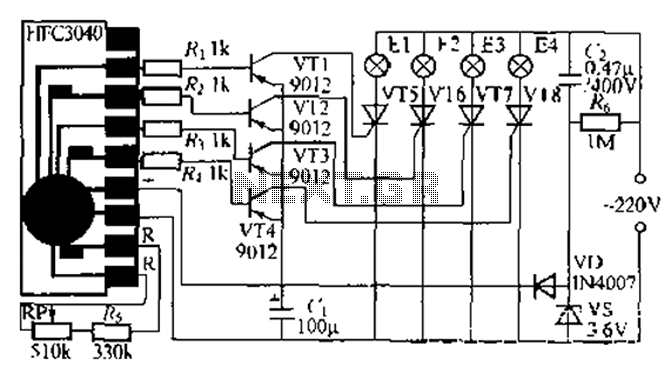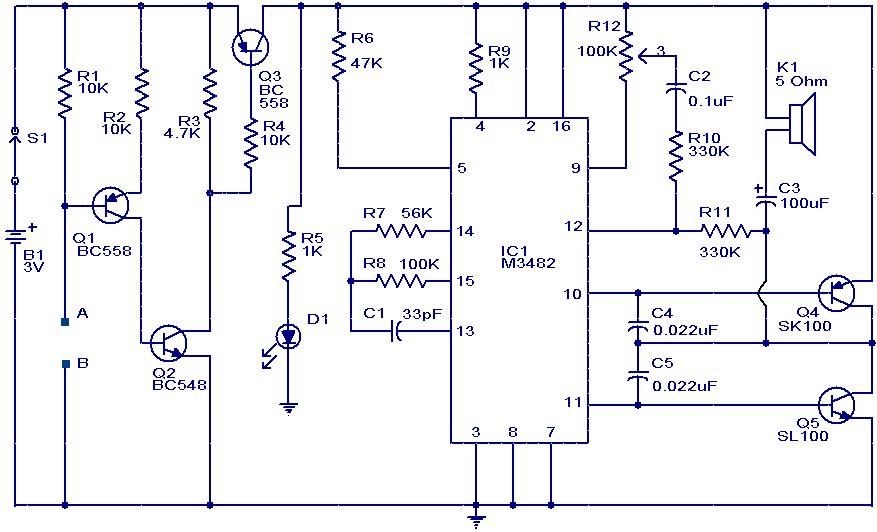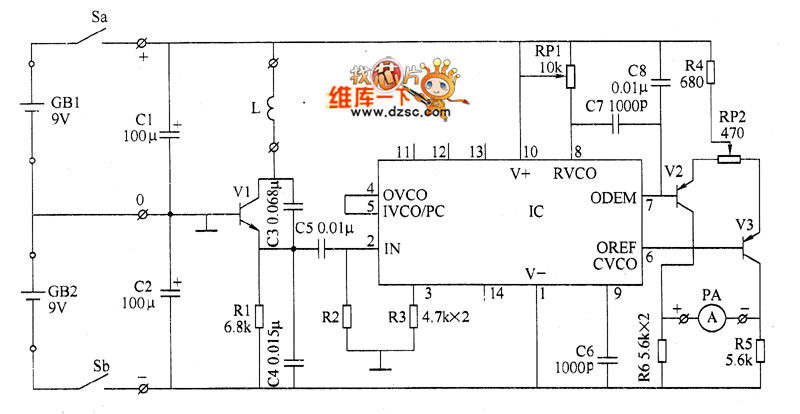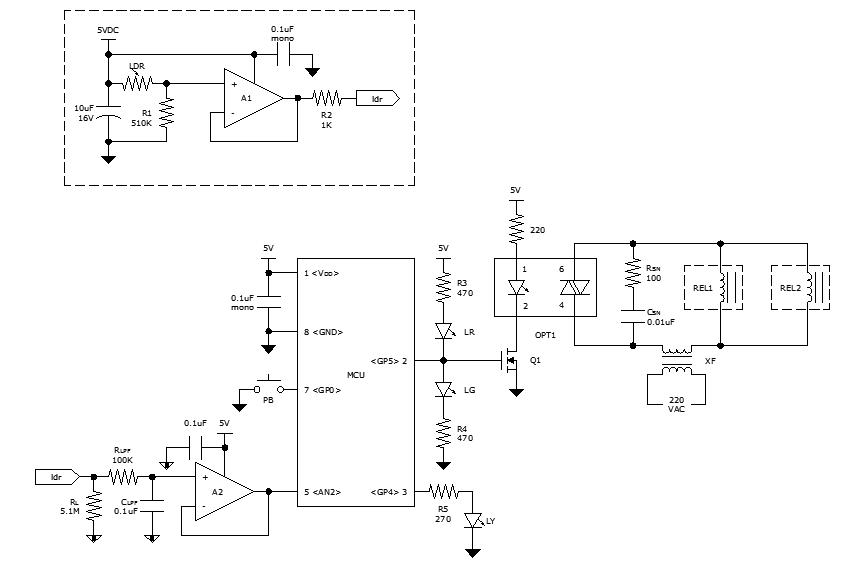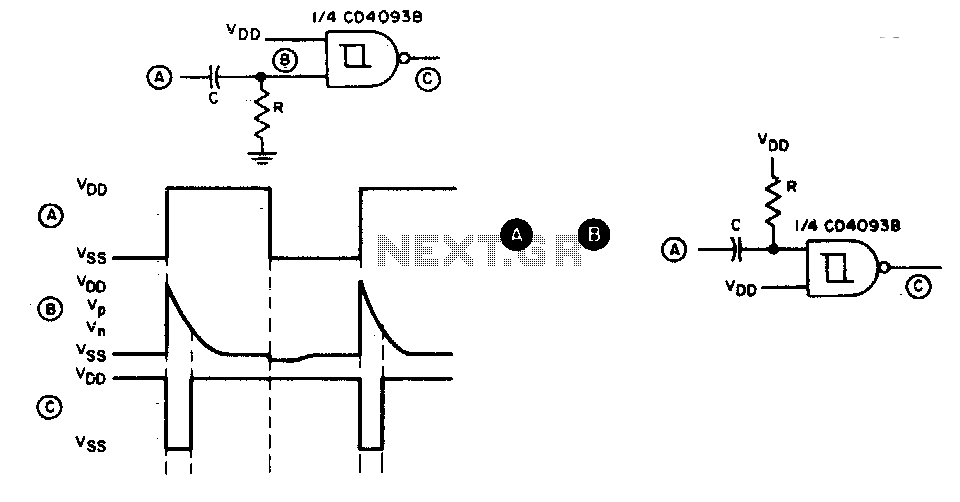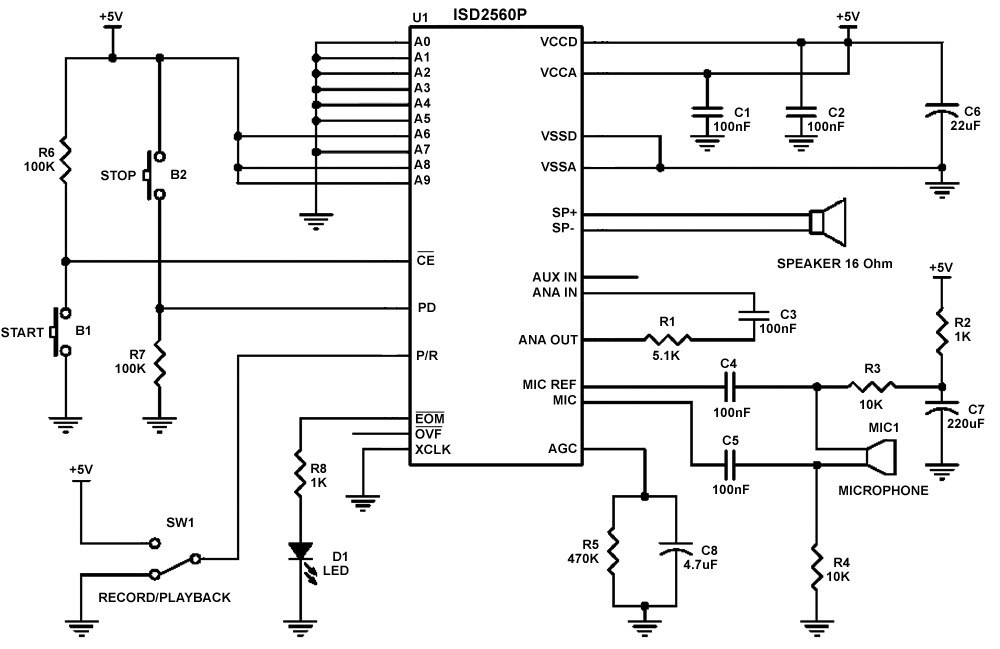
Humidity detector circuit electronic project
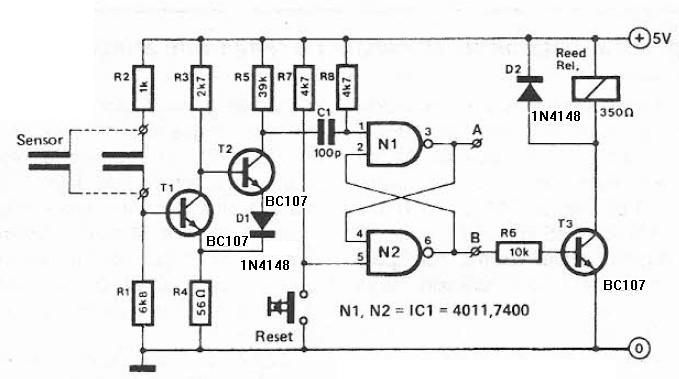
This humidity detector circuit diagram is straightforward and utilizes a limited number of components. It can be employed to activate electronic devices when the detector identifies a specific humidity level. The sensor is made from two copper pieces positioned close to each other. When the electrical resistance of the copper conductors decreases below a certain threshold, a Schmitt trigger, constructed with transistors T1 and T2, is activated. The bistable multivibrator is triggered through capacitor C1, resulting in a low voltage at point B, which activates the relay.
The humidity detector circuit operates by monitoring the resistance between two copper conductors that serve as the sensing element. As humidity increases, moisture accumulates on the copper surfaces, leading to a reduction in resistance. This change is detected by the Schmitt trigger, which is designed to provide a stable output even with noisy input signals. The transistors T1 and T2 form a feedback loop, ensuring that once the circuit is triggered, it remains in that state until it is reset.
The bistable multivibrator configuration allows the circuit to maintain its output state. Capacitor C1 plays a crucial role in defining the timing characteristics of the circuit, influencing how quickly the system can respond to changes in humidity. When the resistance falls below the predetermined threshold, the output at point B transitions to a low voltage, which energizes the relay. This relay can then be used to control larger loads, such as fans, dehumidifiers, or other electronic devices, making this circuit highly versatile for various humidity control applications.
Overall, this simple yet effective humidity detector circuit provides a reliable means of monitoring environmental conditions and automating responses to changes in humidity levels. The use of basic components allows for easy construction and integration into various projects, making it suitable for both educational purposes and practical applications in home automation systems.This humidity detector circuit diagram is very simple and uses few components and can be used for activation of an electronic devices when the detector senses a certain humidity. The sensor is constructed from two pieces of copper placed at a short distance of each other. when the electrical resistance of copper conductors drops below a certain va lue, Schmit trigger built using transistors T1 and T2 switch. Bistable multi-vibrator is flip through C1, so that at point B there is a low voltage (relay triggers). 🔗 External reference
The humidity detector circuit operates by monitoring the resistance between two copper conductors that serve as the sensing element. As humidity increases, moisture accumulates on the copper surfaces, leading to a reduction in resistance. This change is detected by the Schmitt trigger, which is designed to provide a stable output even with noisy input signals. The transistors T1 and T2 form a feedback loop, ensuring that once the circuit is triggered, it remains in that state until it is reset.
The bistable multivibrator configuration allows the circuit to maintain its output state. Capacitor C1 plays a crucial role in defining the timing characteristics of the circuit, influencing how quickly the system can respond to changes in humidity. When the resistance falls below the predetermined threshold, the output at point B transitions to a low voltage, which energizes the relay. This relay can then be used to control larger loads, such as fans, dehumidifiers, or other electronic devices, making this circuit highly versatile for various humidity control applications.
Overall, this simple yet effective humidity detector circuit provides a reliable means of monitoring environmental conditions and automating responses to changes in humidity levels. The use of basic components allows for easy construction and integration into various projects, making it suitable for both educational purposes and practical applications in home automation systems.This humidity detector circuit diagram is very simple and uses few components and can be used for activation of an electronic devices when the detector senses a certain humidity. The sensor is constructed from two pieces of copper placed at a short distance of each other. when the electrical resistance of copper conductors drops below a certain va lue, Schmit trigger built using transistors T1 and T2 switch. Bistable multi-vibrator is flip through C1, so that at point B there is a low voltage (relay triggers). 🔗 External reference
